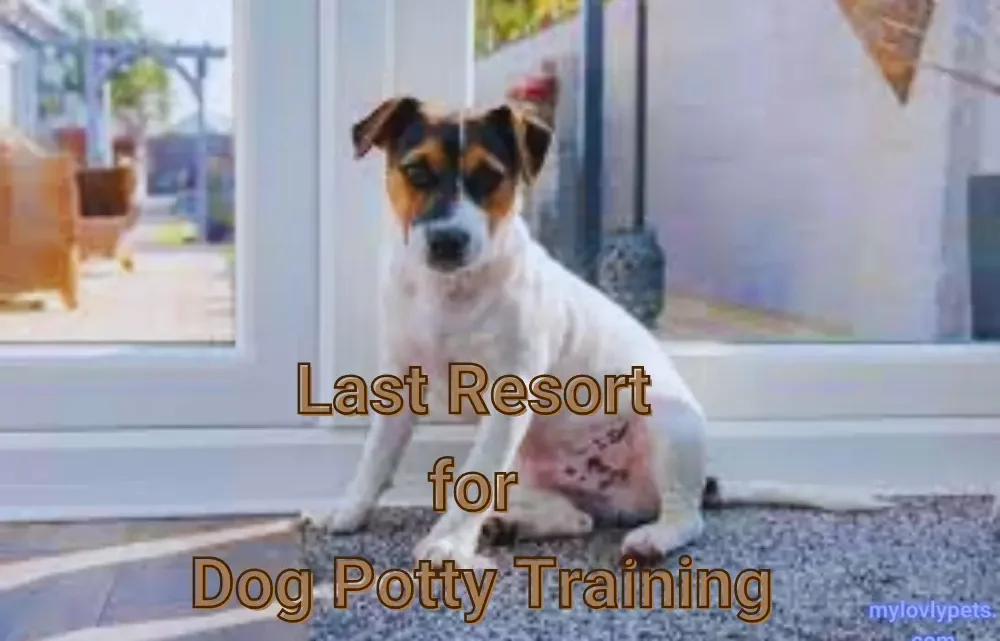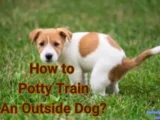
Last Resort for Dog Potty Training
Embarking on the adventure of potty training a new puppy can feel like scaling a mountain for many dog owners. The challenges loom large, and the idea of accidents inside the house can be overwhelming. But fear not, because with the right mindset, a strategic plan, and a boatload of patience, you can conquer this summit and set your furry friend on the path to success.
In the world of puppy training, breaking down seemingly insurmountable tasks into manageable steps is the key. And, just like in life, making the impossible possible begins with adopting the right mindset.
Now, let’s dive into the personalized steps that will guide you through this journey, all while keeping in mind the last resort for dog potty training—because sometimes, unconventional methods become necessary.
Adopting the Right Mindset
Many new dog owners find themselves apprehensive about the task of potty training a puppy. The key, however, lies in adopting the right mindset.
Remember this golden rule: “The key to your puppy learning not to go inside is not giving them the opportunity to go inside!” While it may sound obvious, this mindset shift is the cornerstone of effective potty training. Focus on creating an environment where your puppy always has the chance to go outside, rather than punishing them for indoor accidents.
The real training, it turns out, lies with the dog owners. Success in potty training hinges on your consistency, time management, and the art of rewarding desired behavior.
Step 1: Get a Crate
Consider a crate as your secret weapon in the potty training arsenal. It serves as an indispensable tool, not only for potty training but also for broader training purposes. A crate helps your puppy learn to “hold it,” as dogs generally avoid soiling their living and sleeping space.
Remember two crucial aspects:
- Ensure the crate is the right size, offering comfort without providing room for a potty spot.
- Make the crate a positive space for your puppy, associating it with safety and contentment.
Use the crate strategically, especially if your pup hasn’t relieved itself during a potty break. Direct them to the crate or a confined area immediately upon returning to the house, preventing unsupervised exploration.
Confinement Beyond the Crate
Extend the benefits of confinement even when your puppy is outside the crate. Utilize baby gates to limit their access to multiple floors or rooms in your home. Supervision is key, reducing the chances of sneaky accidents. Remember, puppies outside the crate should ideally be either snoozing or enjoying toys, always under your watchful eye.
Potty Training French Bulldog Puppy| Most Effective Tips for New Owners
Step 2: Develop a Potty Training Schedule
Consistency is the linchpin of successful potty training. Establish a daily routine encompassing feeding times, potty breaks, crate or confinement periods, playtime, and sleep. Communicate this schedule to all family members, ensuring everyone is on the same page.
Maintain a written record of accidents and progress to fine-tune your approach. For young puppies, begin with frequent potty breaks—approximately every 45 minutes during waking hours—and gradually extend the duration as they progress.
Step 3: Go Potty!
Armed with a crate and a schedule, you’re now ready for the core of potty training—actually going potty. Here are some tips:
- Introduce your puppy to a chosen outdoor potty spot immediately upon arriving home.
- Keep your dog on a leash initially to minimize distractions.
- Use a verbal cue like “go potty” to associate a phrase with the desired behavior.
- Reward your puppy with high-value treats the moment they finish relieving themselves.
Step 4: Keep Going Potty! (Overcompensate)
Consistency is paramount. Stick to your schedule diligently, avoiding skipped trips outside. Overcompensate by proactively taking your dog out more than necessary. Be a savvy time manager, reinforcing the pattern that going outside is the preferred option.
Step 5: Deal with Accidents the Right Way
Accidents are part of the learning process, but how you handle them makes a difference. Uncover the right way to react when catching your puppy in the act and how to address soiled spots. Learn to turn setbacks into learning opportunities, refining your approach based on your dog’s progress.
The Last Resort for Dog Potty Training
While exploring various methods, some dog owners turn to puppy pads or paper training as a last resort for dog potty training. However, it’s crucial to note that these methods often prolong the training process. We, along with many trainers, advise against using pee pads, as they teach your dog to go potty inside the house. This approach can be a last resort for dog potty training if mobility issues hinder outdoor trips, but if possible, taking your dog outside is the superior option.
Final Words
Puppy potty training requires time and patience, but the lessons learned and the bond forged during this process will transcend into other areas of your pup’s life. Embrace the journey, stay consistent, and if challenges persist, don’t hesitate to seek guidance from a professional trainer who can help troubleshoot persistent potty problems. Remember, the last resort for dog potty training should be just that—a last resort.


